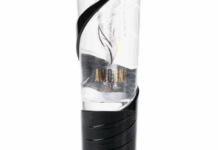Discover safe emotional acting training with PEM, a global method turning performers into “emotional athletes” without burnout or trauma.
If you spend your nights between wine bars in Silver Lake, gallery openings in Chelsea, or rooftop parties in Hong Kong, you already live in a world of high feelings.
But on set, on stage, or on Zoom, most of us were never taught what to actually do with those feelings. That’s where safe emotional acting training from the Perdekamp Emotional Method (PEM) comes in.
PEM’s “Emotional Athletes”
From Hamburg theaters to Brisbane studios, from LA soundstages to New York black boxes, PEM trains what its founders call “emotional athletes” – performers who can reach extreme states with precision and still go home calm enough to cook dinner, help with homework, or grab a late reservation in Miami Beach.
As PEM Master Intructor Sarah Victoria puts it
“you can be emotionally intense and safe at the same time.”
Sarah Victoria
PEM MASTER INSTRUCTOR
From Hamburg to Hollywood: Safe Emotional Acting Training Goes Global
PEM began in the 1990s in Hamburg, when theater director Stephan Perdekamp wanted visceral performances without shattering actors. He watched other methods push people into deep psychological territory, then leave them to crawl back alone. He wanted something different.
As he explains, he started by asking a simple, almost brutal question: what is an emotion in the body? Instead of using memory or imagination, he and his team studied the nervous system and movement patterns. Over time they discovered specific “access points” in the nervous system that, when trained, turn on complex movement patterns we recognize as fear, grief, lust, aggression, joy and more.
That’s why a PEM actor can walk onto a soundstage in Los Angeles, hit full panic, then walk out and joke with the crew with complete relatability and a sense of humor.
As Stephan Perdekamp says,
“The actor doesn’t have to sacrifice their health in order to give insights to the audience.”
Stephan Perdekemp
In PEM, the mind stays in the studio, not in the fictional narrative of the story. The body does the emotional heavy lifting; the psyche stays safe enough to watch, steer, and even enjoy the flavor of the work. That is the heart of safe emotional acting training.
Emotional Athletes in a Fun-Loving, High-Pressure World
The phrase “athlete of emotion” came from an acting tutor in Wellington who studied PEM and realized you can literally train emotion like a sport. Musicians have scales. Dancers have barre. Actors, historically, had vibes, pain, and guesswork.
PEM flips that. Sarah remembers playing a character who self-harms on stage. The audience sobs. She walks off, resets for the next scene, and feels no emotional residue:
“I’m not psychologically there.
there’s no residue of that scene that I have to get rid of…”
Sarah Victoria
In a city like Chicago, where theater schedules are relentless and side jobs are real, that matters. The same goes for actors in Atlanta juggling studio work and indie films or for performers in San Francisco splitting their time between stage, startups, and flights to the next gig.
PEM drills each emotion as a separate movement pattern.
Aggression. Grief. Fear. Lust. Happiness. Revulsion.
Once they’re clear, you can blend them the way a fun-loving bartender in Manhattan blends a cocktail—measured, bold, and full of flavor. Fear under aggression. Grief under anger. A flicker of longing under power.
With that level of control, a director can say in a rehearsal room, “On this line, give me a hint of sadness under the rage,” and the PEM-trained actor can calmly ask, “Which word?” Then they dial the nervous system like a sound engineer.
And because this is still real life, not a monastery, PEM leaves plenty of room for flavor and fun-loving energy on set or backstage. The method is technical. The people using it do not have to be.
Beyond Burnout: PEM for Everyday Lives (Not Just Stars)
Burnout is not just a Hollywood story. It’s very real no matter your occupation or location.
Perdekamp describes stress as a jammed fight-or-flight system:
-
Aggression wants to push through the problem.
-
Fear wants to run away.
-
Your job, email, or life won’t let you do either.
So both patterns stay half-on all day. They burn electricity, literally. Over time, the body stops sending energy at all – that’s the slide toward burnout and, in severe cases, depression.
PEM’s answer is wonderfully unromantic: exercises. Very simple, very repeatable movements that directly address the aggression pattern, then the fear pattern, and teach the nervous system how to switch them on, off, and separate again.
Actors use this between takes. But so do non-actors: professionals who found themselves exhausted, anxious, or stuck. As Sarah says, the ability to release “tiny little movements that people usually discard” changed her workload and her life. Less chronic stress means more space, more empathy, more capacity to help others – whether you’re running a set in LA or a kitchen in Aspen.
This is also why PEM now works with psychologists and researchers.
In Hamburg, a respected research institute on substance use disorder has approved a randomized controlled trial to see how PEM training supports people with addiction. That scientific curiosity opens the door for everyone, not only performers.
One Biology, Many Cultures: PEM as a Global Travel Story
PEM has been taught in Romania, New Zealand, Australia, Europe, and across the United States. The stories are quietly wild.
In Romania, during a fear exercise in a park, PEM students ran with such authentic fear that people on the sidewalks started running too. They didn’t know why. Their nervous systems did.
In American drama schools, students ran “fear runs” on a baseball field and came back amazed that no amount of imagination had ever taken them that far. In Brisbane and Hamburg, PEM now works not only with actors but with health prevention programs and people on the autism spectrum.
The global takeaway is almost comforting: the emotional machinery in an actor is the same as in a bartender, a coder, or a gallery owner. Culture decides what we show. Biology decides how we move. PEM lives in that gap.
And if you like your self-work, PEM’s teachers are very aware that people have lives to live, bills to pay, and flights to catch. This is precision training for humans who still want flavor and fun-loving joy outside the rehearsal room.
If you’re thinking about where PEM might fit in your own creative life, career, or city, start with a deeper guide here: https://pem-acting.com
FAQ: The School of Emotional Athletes
Q1. What is safe emotional acting training in PEM?
Safe emotional acting training in PEM means learning to trigger emotions through the body and nervous system, not by reliving trauma or painful memories. You train specific movement patterns for fear, grief, joy, aggression and more, then learn how to dial them up and down while keeping your mind anchored in the present.
Q2. Is PEM only for professional actors?
No. PEM started with actors and musicians, but the same tools now support non-actors dealing with stress, anxiety, burnout, or emotional overload. Workshops and online coaching are open to performers, creatives, and everyday people who want better emotional mechanics.
Q3. Can PEM really help with burnout and stress?
PEM doesn’t replace therapy, but it offers a very practical way to calm the nervous system and un-jam fight-or-flight reactions. By training and then releasing specific emotional patterns, people often feel less drained, recover faster after intense days, and regain the energy they need for work, family, and a more fun-loving social life.
How to Join the School of Emotional Athletes
PEM has grown from a small Hamburg studio into a global network, with bases in Brisbane, workshops around the country and around the world, plus online programs that reach anyone with a screen and a bit of curiosity. There are weekend intensives, long-term tracks, and focused “on demand” courses for skills like crying or laughing on cue.
If you’re an actor, director, musician, dancer, or simply someone whose life runs high on feeling, safe emotional acting training offers a way to go deeper without breaking yourself. Think of it as upgrading your emotional hardware. The stage, the set, and the city – from Aspen to Hong Kong – will feel very different once you learn how your own inner machinery actually works.


















![Get Your Indie Movie Made (Responsibly): Jeff Caruso of Wrapbook Leads the AFM 2025 Film Finance Conversation [Exclusive Interview] American Film Market](https://dailyovation.com/wp-content/uploads/2025/11/AmericanFilmMarket2025-1-218x150.jpg)














